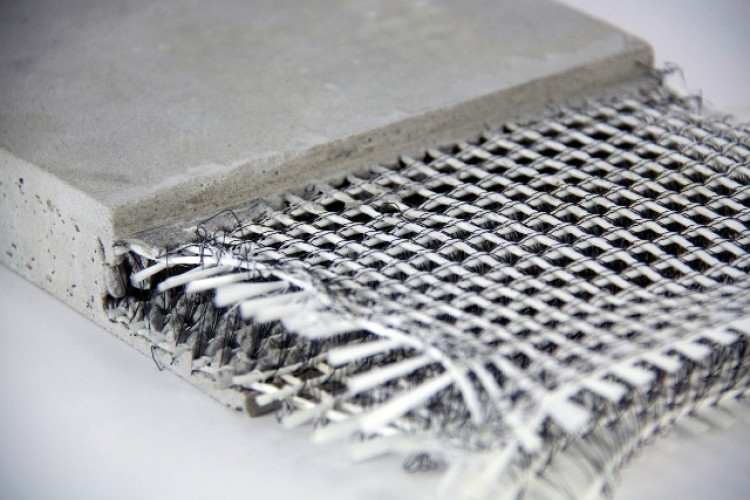Advanced Composites for Resilient and Lightweight Building And Construction
Advanced Composites for Resilient and Lightweight Building And Construction
Blog Article
Opening the Ecological Advantages of Recycled Compounds in Construction and Layout
In the world of construction and style, the use of recycled composites holds substantial pledge for improving sustainability techniques and lowering ecological effect (composites). By including these cutting-edge products, there is a potential to resolve crucial problems such as waste minimization, power preservation, and a reduction in carbon impact. The change towards a much more sustainable future in these industries depends upon opening the complete potential of recycled composites. This conversation will certainly explore the complex advantages and obstacles associated with incorporating recycled composites into construction and layout, providing a glance into the transformative opportunities that exist in advance.

Environmental Impact Reduction
The reduction of ecological effect via making use of recycled compounds in construction and layout plays a crucial role in sustainable practices. By incorporating recycled composites into structure materials, the construction market can considerably lower its carbon impact and add to a much more environmentally friendly future. These lasting materials, made from repurposed plastics, wood fibers, or various other recycled elements, provide a practical alternative to conventional construction materials without endangering on quality or sturdiness.
Recycled compounds help draw away waste from landfills and lower the requirement for extracting raw materials, hence preserving natural deposits. In addition, the manufacturing procedure of these compounds typically consumes less energy and produces fewer greenhouse gases contrasted to generating virgin materials (composites). This shift towards utilizing recycled compounds not just decreases ecological injury but additionally advertises a round economic climate by motivating the reuse of materials that would certainly or else be discarded
Waste Minimization
With a concentrate on decreasing waste in building and design, the assimilation of recycled composites uses a lasting remedy to minimize environmental impact. Waste minimization is a crucial aspect of sustainable methods, and making use of recycled compounds offers an opportunity to achieve this objective successfully. By using materials that have actually currently served their preliminary objective, such as recycled plastics or reclaimed timber fibers, the building and construction and layout industries can significantly reduce the quantity of waste generated and sent to land fills.
Recycled composites have the prospective to divert considerable quantities of waste from typical disposal techniques, adding to a more round economic situation where resources are made use of efficiently. In addition, the production procedure of recycled composites usually eats less energy and produces less exhausts compared to virgin products, additionally decreasing the environmental impact of building and style projects.
Executing waste minimization methods via the consolidation of recycled compounds not just helps in saving all-natural resources however also promotes a much more lasting method to structure and developing for a greener future.
Power Preservation
Integrating recycled compounds more not only reduces waste in building and design but additionally plays an essential function in improving energy conservation practices within the industry. The use of recycled compounds in building and construction can substantially contribute to power preservation via different methods. By promoting the usage of recycled compounds in construction and layout, the sector can make substantial strides in the direction of accomplishing power performance and reducing its carbon footprint, eventually adding to a more sustainable developed setting.
Carbon Footprint Reduction
Enhancing sustainability techniques with the utilization of recycled compounds in building and design significantly minimizes the carbon impact of the industry. By integrating recycled products right into the manufacturing of compounds, the requirement for virgin resources lowers, resulting in reduced energy consumption and greenhouse gas exhausts related to traditional manufacturing processes. This reduction in carbon impact is critical in combating environment change and promoting a more eco pleasant method to building and construction and design.
Moreover, using recycled compounds additionally assists in diverting waste from landfills, thereby alleviating the environmental impact of disposal and advertising a circular economic climate. The carbon impact reduction attained via the fostering of recycled composites straightens with the global press in the direction of sustainable methods and the decrease of industrial discharges. It showcases a dedication to responsible source monitoring and a shift towards greener choices in the building and design markets. Inevitably, by prioritizing the combination of recycled compounds, the sector can make substantial strides in reducing its carbon impact and adding to a more sustainable future.
Sustainable Future
The combination of recycled composites in building and construction and design not just addresses instant environmental worries but also lays a solid foundation for a lasting future in the sector. By integrating recycled composites into building materials and items, the construction and layout industries can dramatically minimize their reliance on virgin sources, resulting in an extra round economic situation. This shift towards sustainability is vital for reducing the ecological impact of conventional more tips here building techniques, which usually result in high degrees of waste generation and source depletion.

Conclusion
Finally, recycled compounds supply considerable ecological benefits in building and construction and design by lowering environmental effect, decreasing waste, conserving energy, decreasing carbon impact, and advertising a lasting future. Welcoming using recycled compounds can add to a more environmentally-friendly strategy to structure and layout, inevitably resulting in an extra lasting and greener future for all.
The decrease of ecological effect through the use of recycled compounds in construction and layout plays an essential role in sustainable techniques.With a focus on lessening waste in construction and layout, the combination of recycled composites offers a sustainable remedy to lower ecological impact. By promoting the usage of recycled composites in building and construction and style, the industry can make significant strides in the direction of achieving power effectiveness and lowering its carbon footprint, inevitably imp source adding to an extra sustainable constructed setting.

Report this page